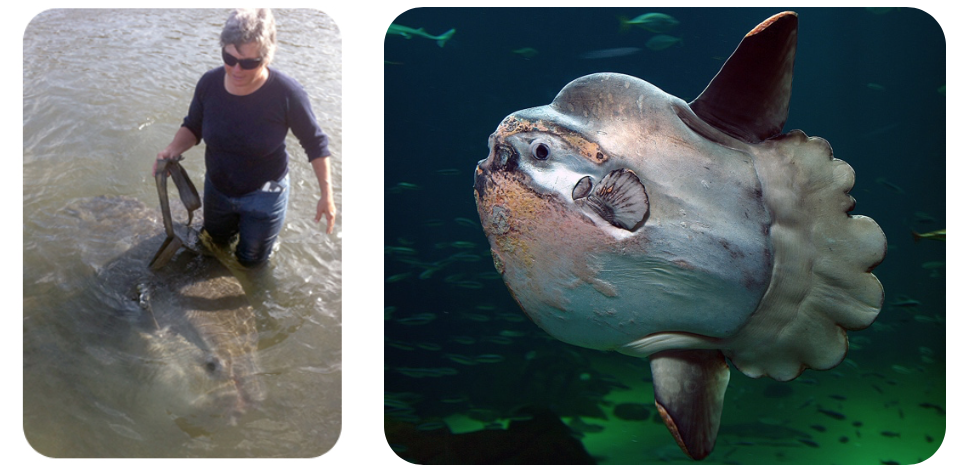Did you know that the largest bony fish in the world is a sunfish? Not the little orange-bellied “sunnies” that you find in your neighborhood ponds, but the giant ocean sunfish, Mola mola. Ocean sunfish can grow six to 10 feet long and weigh two to four tons! These gentle giants get their name because they like to ‘sun’ themselves by lolling on their broad flat sides near the ocean surface. When they are not sunbathing, they can be found slurping up jellyfish, their favorite food. They will even eat the dangerous rainbow-colored Portuguese man-of-war!
But life for sunfish is not all sunshine and rainbows. Just like whales, dolphins, and sea turtles, ocean sunfish occasionally become stranded on shore. When this happens in New England, volunteers from the New England Coastal Wildlife Alliance’s (NECWA) New England Ocean Sunfish Project (NEOSunfish) spring into action.
When NECWA receives news of a stranding, volunteers like Krill Carson work hard to return the sunfish to the sea. If the animals don’t survive, NECWA makes the best of the situation by collecting samples and data, which helps researchers better understand how sunfish live and why they sometimes strand.

Recently, OGL has partnered with NECWA to archive tissue and DNA from stranded Mola mola and to make these samples available to researchers. The samples are valuable because they represent years of New England strandings. This special collection helps researchers learn how populations of Mola mola are changing over time, and whether stranding rates are increasing.
Want to get involved in helping the gentle Mola mola? If you have seen a living or stranded ocean sunfish in the wild, you can report your sighting here! You can also help to support OGL’s archiving efforts by making a gift to OGL to support our conservation mission.
